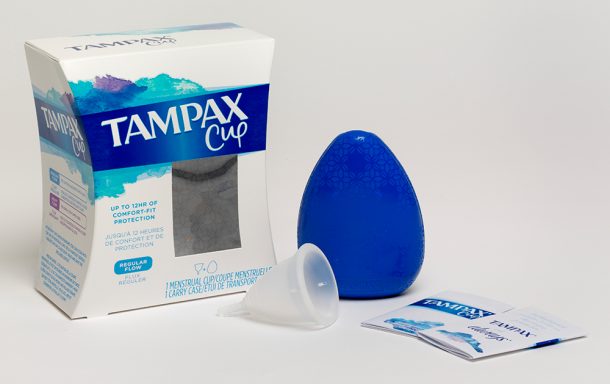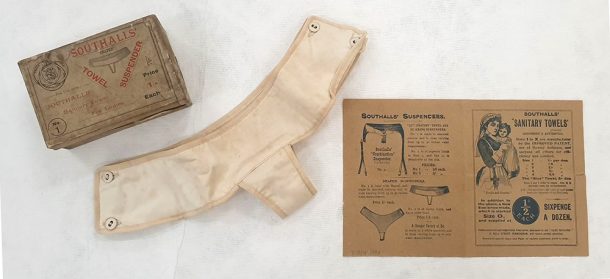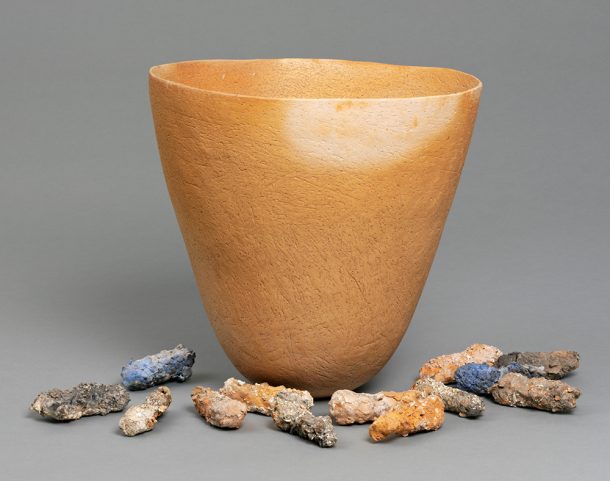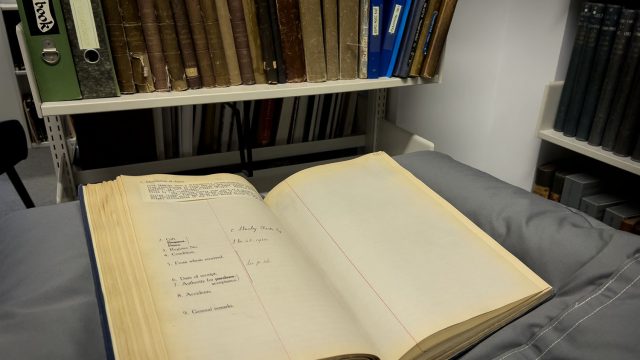The Tampax Cup has entered the V&A collection as part of our Rapid Response Collecting programme, where objects are acquired in response to major moments in recent history that touch the world of design and manufacturing.

Menstrual cups are nothing new. Leona Chalmers, American actress, inventor, and author, patented the original menstrual cup, then made of rubber, in the US in the 1930’s. This was just a few years after the osteopathic physician Dr. Earl Haas patented the tampon. So why is the Tampax Cup a timely acquisition for Rapid Response Collecting?
Recently there has been a sizeable consumer shift away from single-use plastics. This shift has also been legislative, with the state of California banning the use of plastic straws, and France banning all non-biodegradable cutlery. In the Design, Architecture and Digital department here at the V&A, we have looked at many products that react to consumer environmental consciousness and have been intrigued by how large companies reconsider their practices in response to this, such as the sustainable bricks being rolled out by Lego.
Upon the announcement that Tampax, one of the world’s biggest producers of disposable period products, were about to release a menstrual cup we knew that we might have a new Rapid Response Collecting acquisition. The market for non-single-use plastic alternatives to typical period products is thriving. A quick internet search brings up products like Natracare plastic free tampons and the Thinx washable period underwear. The latter even boasts adverts with celebrity endorsements from Mila Kunis and Mindy Kaling
For those unfamiliar, a menstrual cup is a soft plastic vessel worn internally, much like a tampon to collect menstrual fluid. Unlike a tampon, the cup is not disposable. Present day menstrual cups tend to be made of medical grade silicone to allow for hygienic sterilisation. Companies like the Brighton-based MoonCup have been selling their cups discreetly in pharmacies and health food shops for many years. Tampax’s claim, as newcomers to the cup market, is that their years of gynaecological research means their product is the most ergonomic. Their marketing material states “At TAMPAX we didn’t invent the menstrual cup, we just want to perfect it”.
The Tampax Cup also addresses a significant gap in the V&A’s collections. It’s not unusual to spot objects relating to the functions of the human body throughout the museum, from objects designed for medical support to potty humour in satirical prints. However very few explicitly relate to periods.
Our textiles and fashion collection includes a Southhall Sanitary belt from 1910. Y-shaped belts like this were a common way to secure a sanitary pad in place until the introduction of adhesive sanitary pads in the 1970’s. The adhesive pad offered the wearer greater freedom in clothing choices leading to a rapid decline in sanitary belts. Sanitary pads have continued to respond to trends in clothing, such as Bodyform’s String Liners, which were designed for use with thong underwear.

T.411:1-1996. © Victoria and Albert Museum, London
In our ceramics collection Elspeth Owen’s Menopause Pot consists of the last tampons used by the artist while going through menopause, dipped in slip for their long term preservation. The frankness in addressing this subject can also be seen in the zine Periods are bloody and messy… by Aqui Thami. The exploration of menstruation and menopause in art confronts societal taboos and makes the often-silenced pain and discomfort of these experiences not just visible, but material.

C.340:1, 2-2018. © Victoria and Albert Museum, London
Social taboos around menstruation and the ephemeral nature of the associated products have made them historically difficult to collect, despite there being over a century of commercial and graphic design for period products. Thankfully, there are some great projects happening in the museum sector to address these omissions at places like the Science Museum and the new Vagina Museum project. So, although periods have often been overlooked in collecting policies, the age of menstrual mystic in museums is now at last coming to an end.



What about the nixit menstrual cup? That’s one step ahead of the traditional cup that Tampax have made!